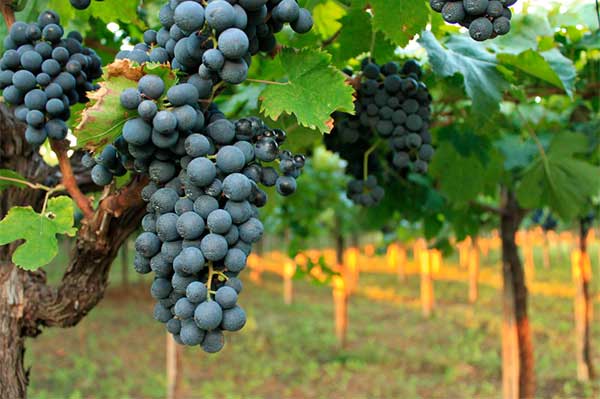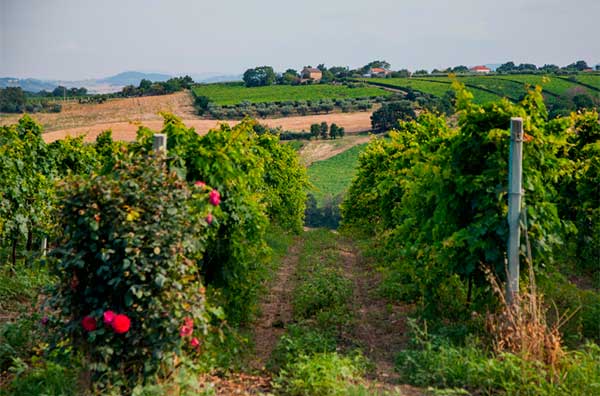Introduction
Montepulciano dAbruzzo wine, a renowned Italian red, embodies the rich viticultural heritage of the Abruzzo region. This guide aims to enlighten enthusiasts about its history, flavors, and the perfect harmony between this wine and various dishes, providing an essential primer for both novices and connoisseurs alike.
1. History of the Montepulciano dAbruzzo Wine and Grapes

- Cultivation Regions
The Montepulciano d’Abruzzo grape finds its roots in the heart of east-central Italy, thriving across the diverse landscapes of Abruzzo. From the rugged Apennines to the breezy Adriatic coast, this grape variety enjoys a climate and terroir conducive to producing wines of remarkable character and quality. The DOC (Denominazione di Origine Controllata) territory of Montepulciano d’Abruzzo, established in 1968, spans the entire region, with Chieti, in the fertile southern province, contributing the largest share of wine production. The area’s terroir varies significantly, from marly-clay and sand-rich soils to limestone and alluvial deposits, providing a rich tapestry from which this grape draws its unique qualities.
Historically, Montepulciano d’Abruzzo made its documented debut in the 18th century, but its roots likely extend much deeper, intertwining with the region’s rich cultural and viticultural heritage. By 1968, its designation as a DOC wine not only solidified its importance within Italy but also marked the beginning of its ascent as a globally recognized and appreciated wine. The Colline Teramane subzone, distinguished for its stringent quality standards, was later elevated to DOCG (Denominazione di Origine Controllata e Garantita) status in 2003, underscoring the premium quality of Montepulciano dAbruzzo wines produced in this particular area.
The grape’s history is intertwined with Abruzzo’s identity, flourishing across the region’s varied landscapes. From ancient times, when Greek and Roman writers praised its virtues, to the present day, Montepulciano d’Abruzzo has been a symbol of resilience and quality. Its ability to adapt and thrive in the diverse climates of Abruzzo, from the mountains to the coast, underscores its significance as a cornerstone of the region’s viticultural legacy.
Montepulciano d’Abruzzo’s journey from ancient accolades to contemporary acclaim is a testament to its enduring appeal and the dedication of those who cultivate it. As we explore the flavors and recommended pairings of this esteemed wine, we delve deeper into the essence of what makes Montepulciano d’Abruzzo a treasure of Italian winemaking.
Stay tuned for the upcoming sections where we will uncover the unique flavors of the Montepulciano grape, delve into the factors determining these flavors, and explore the harmonious relationships between Montepulciano d’Abruzzo and a variety of dishes.
2. Flavors of the Montepulciano Grape

Montepulciano dAbruzzo wines are celebrated for their rich, robust flavors, deep colors, and aromatic complexity. These wines often feature a deeply colored profile, ranging from ruby to inky purple, which hints at the intensity and depth of flavors awaiting the palate. The primary flavor profiles are characterized by ripe red and black fruits such as cherry, blackberry, and plum. These fruity notes are beautifully complemented by earthy undertones, pepper, and spice, adding layers of complexity and rustic charm. Wine experts like Oz Clarke describe Montepulciano d’Abruzzo as possessing pepper and spice notes, with a “rustic” quality that becomes less pronounced when paired with food. Similarly, Mary Ewing-Mulligan, a Master of Wine, notes the wines as aromatic, tannic, and with low acidity, which contributes to their approachability and versatility in pairings.
- Factors Determining Flavors

The flavors of Montepulciano dAbruzzo wines are influenced by a variety of factors, including terroir, climate, and winemaking practices. The region’s terroir, with its marly-clay, sand-rich flysch, limestone soils, and alluvium deposits, provides a nurturing ground for the Montepulciano grapes, imparting distinct mineral and earthy notes to the wine. Climate plays a crucial role as well; the combination of the cool mountain air and the moderating influence of the Adriatic Sea ensures optimal ripening of the grapes, preserving their acidity and freshness while developing their signature fruity and spicy flavors. Winemaking practices, particularly the use of oak aging, introduce additional dimensions of flavor. Oak-aged Montepulciano d’Abruzzo can acquire hints of vanilla, tobacco, and cocoa, enriching the wine’s complexity and enhancing its aging potential. Conversely, wines aged in stainless steel or concrete vats retain more of the grape’s natural fruitiness and freshness, offering a different but equally engaging tasting experience.
The intricate dance between these factors results in a wine that is not only reflective of its geographic origin but also of the philosophies and techniques of the winemakers behind each bottle. Whether enjoyed young with its bright, fruit-forward character or savored after years of maturation, Montepulciano d’Abruzzo offers a palette of flavors that can satisfy a wide range of wine enthusiasts.
In the next section, we’ll explore the harmonies between Montepulciano d’Abruzzo and food, including how the wine’s acidity impacts taste, the best dishes to pair with this versatile wine, and which dishes might be less compatible. Stay tuned to discover how to elevate your dining experience with Montepulciano d’Abruzzo.
3. Harmonies between Montepulciano and Dishes

Montepulciano dAbruzzo wines, with their rich flavors and aromatic complexity, offer a versatile pairing option for a wide range of dishes. Understanding how to match this wine with food enhances the dining experience, making each meal memorable.
- How Acidity Affects Taste
The acidity in Montepulciano d’Abruzzo is typically moderate, which makes it an excellent companion to a variety of foods. This level of acidity can refresh the palate between bites, particularly with fatty or heavily seasoned dishes. It cuts through the richness, balancing the flavors and preparing the mouth for the next morsel. This refreshing characteristic ensures that Montepulciano d’Abruzzo can stand up to both hearty and delicate flavors, making it an adaptable choice for diverse culinary traditions.
- Best Dishes for a Montepulciano d’Abruzzo
Given its flavor profile, Montepulciano d’Abruzzo pairs splendidly with rich, savory dishes. Amatriciana, a classic Italian pasta dish with a spicy tomato and pancetta sauce, harmonizes beautifully with Montepulciano d’Abruzzo. The wine’s fruity depth complements the tangy sauce, while its spice notes resonate with the dish’s pepperiness. Similarly, the wine pairs well with Sagne e fagioli, an Abruzzese dish combining beans and pasta in a rich tomato sauce. The earthy flavors of the beans and the acidity of the tomato find a perfect counterbalance in the wine’s tannic structure and fruit notes. These pairings showcase Montepulciano d’Abruzzo’s ability to enhance the flavors of traditional Italian cuisine, creating a harmonious dining experience.
- Dishes You Should Avoid Pairing with a Montepulciano
While Montepulciano d’Abruzzo is a versatile wine, certain dishes may not fully capture its essence or could even clash with its profile. Light, delicate fish dishes or very spicy Asian cuisine might not be the best companions for Montepulciano d’Abruzzo, as the robust nature of the wine can overwhelm the subtle flavors of the fish or contrast too sharply with the spices used in some Asian dishes. Similarly, very sweet desserts may not pair well, as the sweetness can make the wine taste bitter or astringent by comparison.
Choosing the right dish to accompany Montepulciano d’Abruzzo involves considering the balance of flavors, the intensity of both the wine and the food, and how one can complement or enhance the other. Whether it’s a hearty meat dish, a savory pasta, or a rich vegetarian entree, the right pairing can elevate the wine and create a memorable meal.
In conclusion, Montepulciano dAbruzzo wine offers a world of flavors, history, and pairing possibilities that can cater to a wide spectrum of tastes and occasions. From its deep-rooted history in the Abruzzo region to its versatile flavor profile and its harmonious pairings with various dishes, Montepulciano d’Abruzzo stands as a testament to the rich viticultural heritage of Italy. Whether you’re a seasoned wine enthusiast or new to the world of wines, exploring Montepulciano d’Abruzzo promises an enriching journey through the essence of Italian winemaking.
